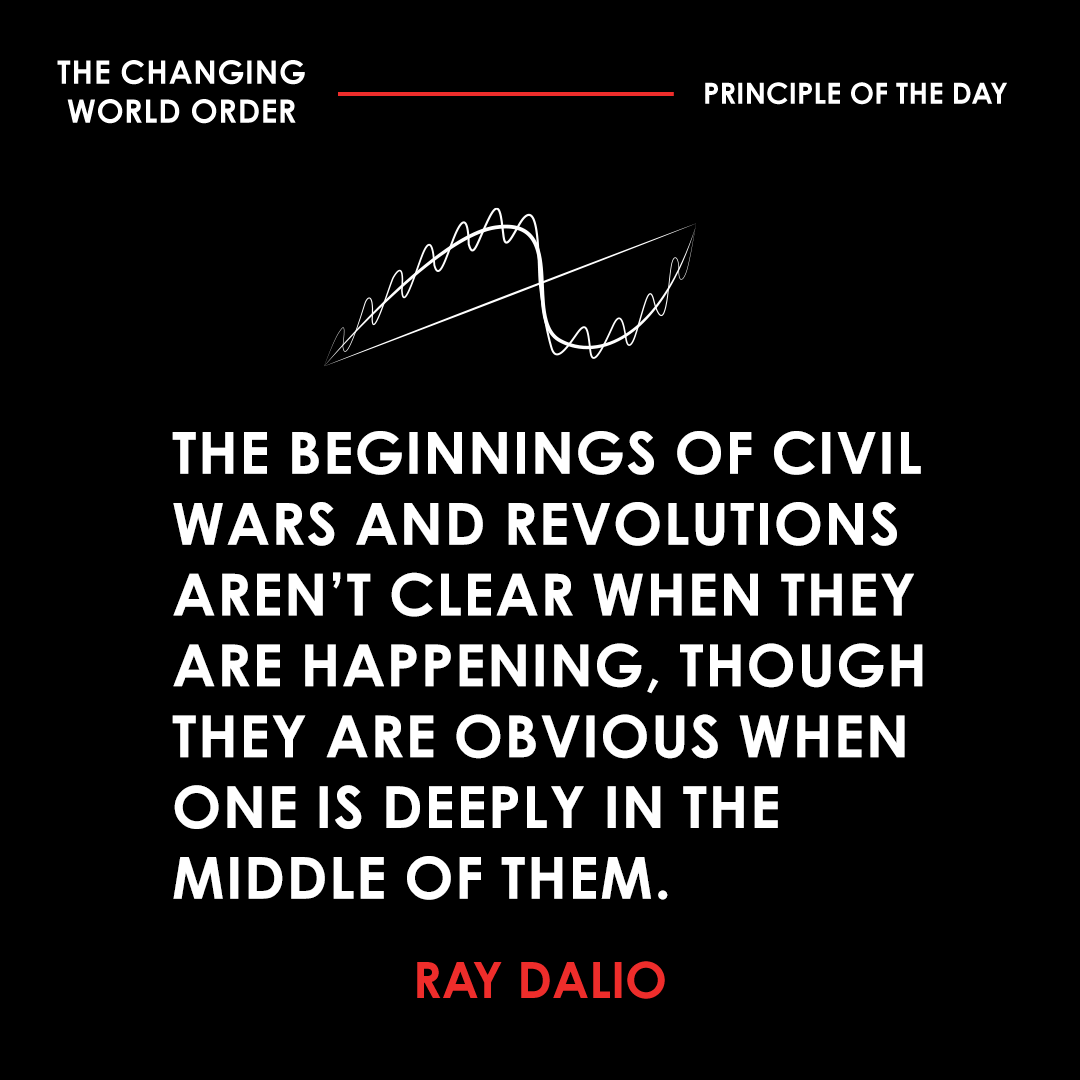
As of this writing there are varying amounts of conflict going on within different countries, as shown in this chart. (1/5)
Internal conflict is especially high in the United States, which appears to be in Stage 5 of the cycle (when there are bad financial conditions and intense conflict), while China appears to be in Stage 3 (when there is peace and prosperity). (2/5)
Changes to this measure can happen quickly—e.g., the changes that produced the Arab Spring, the conflicts in Hong Kong, internal wars in Syria and Afghanistan, recent big protests in Peru and Chile, etc.—leading to revolutionary changes in their internal orders. (3/5)
Because I expect that these readings will be out of date by the time this book is in your hands, I will update them regularly at economicprinciples.org. (4/5)
If you’re interested in learning more, check out my new book, Principles for Dealing with the Changing World Order, which is now available. #changingworldorder (5/5)
• • •
Missing some Tweet in this thread? You can try to
force a refresh











